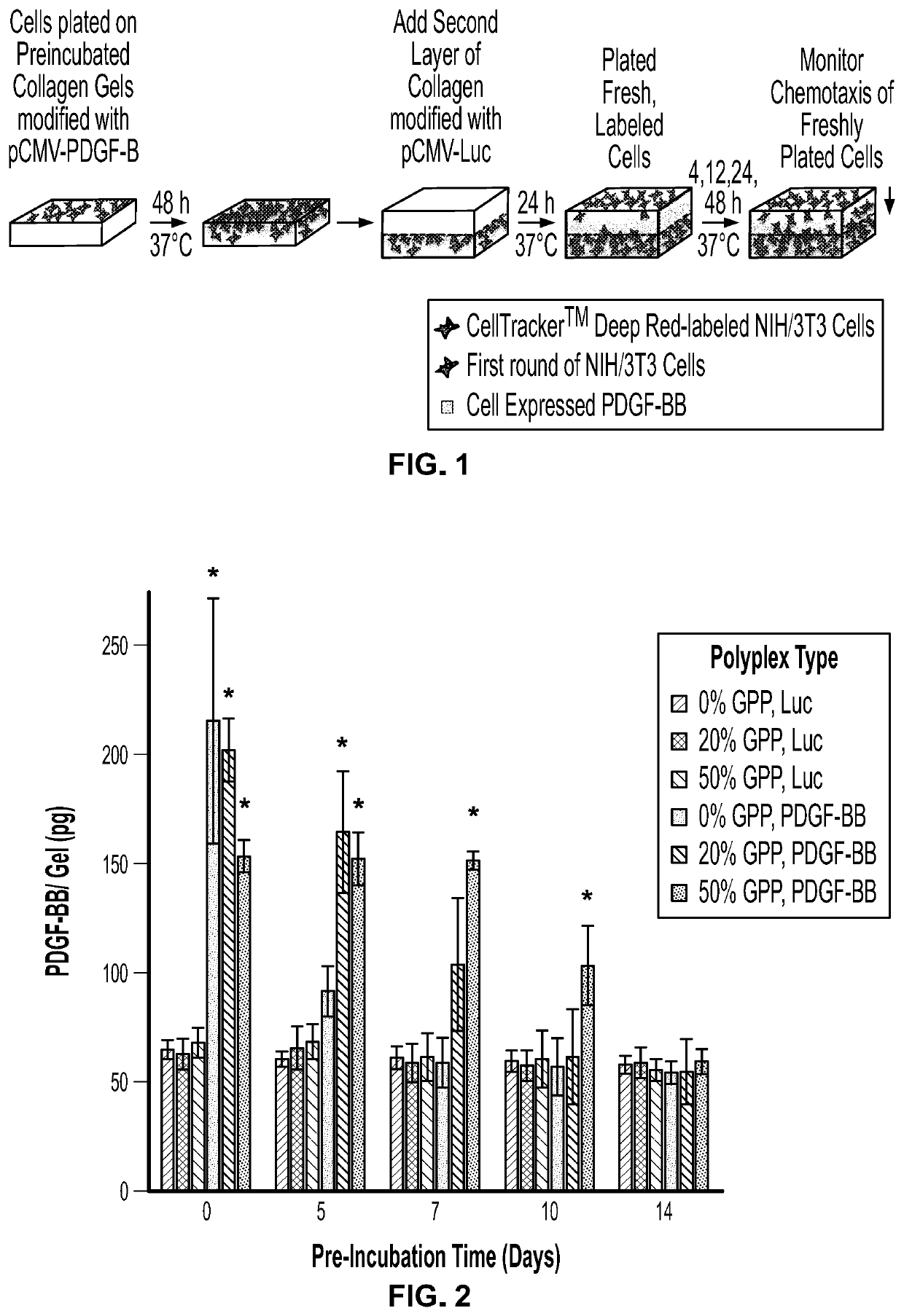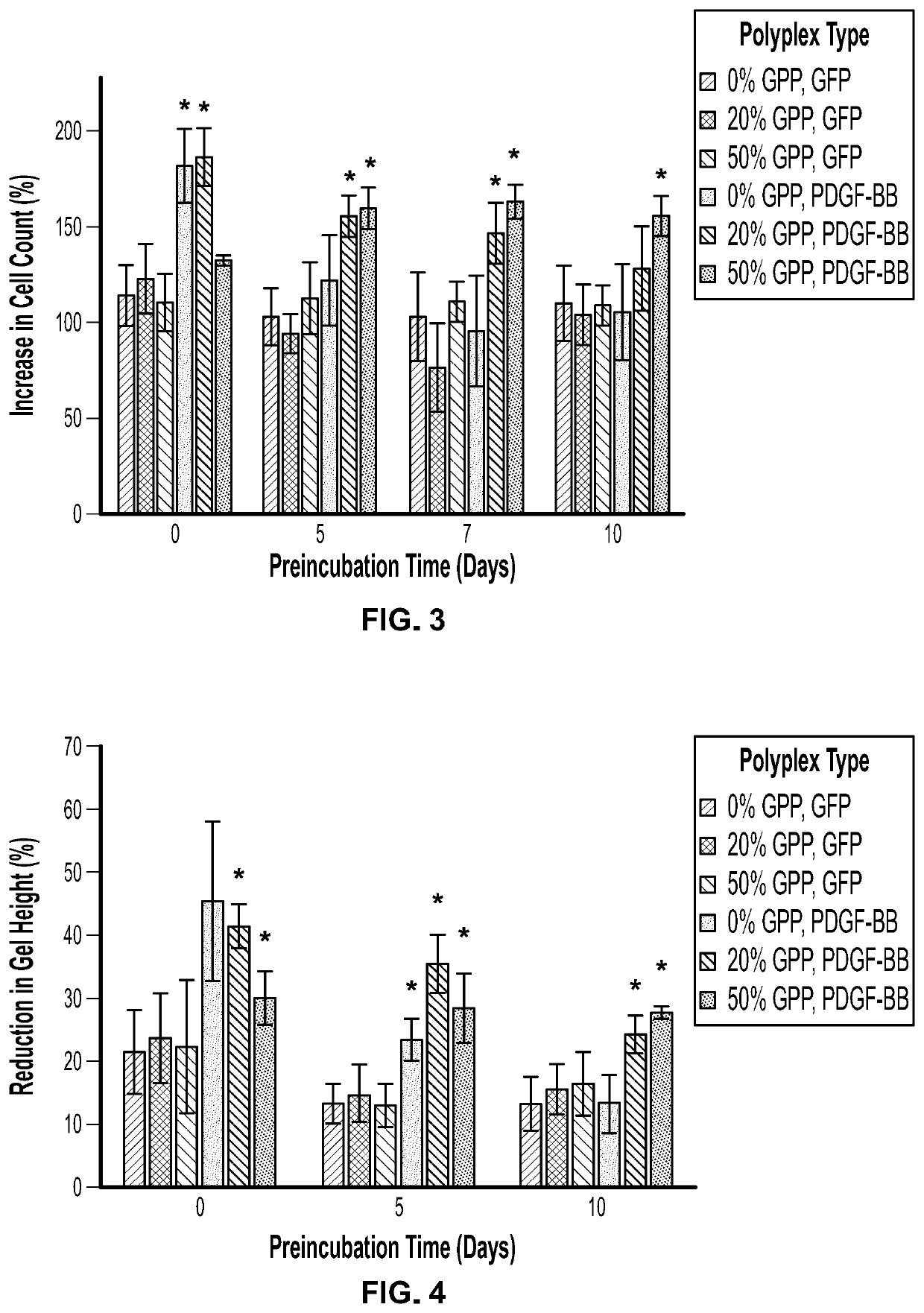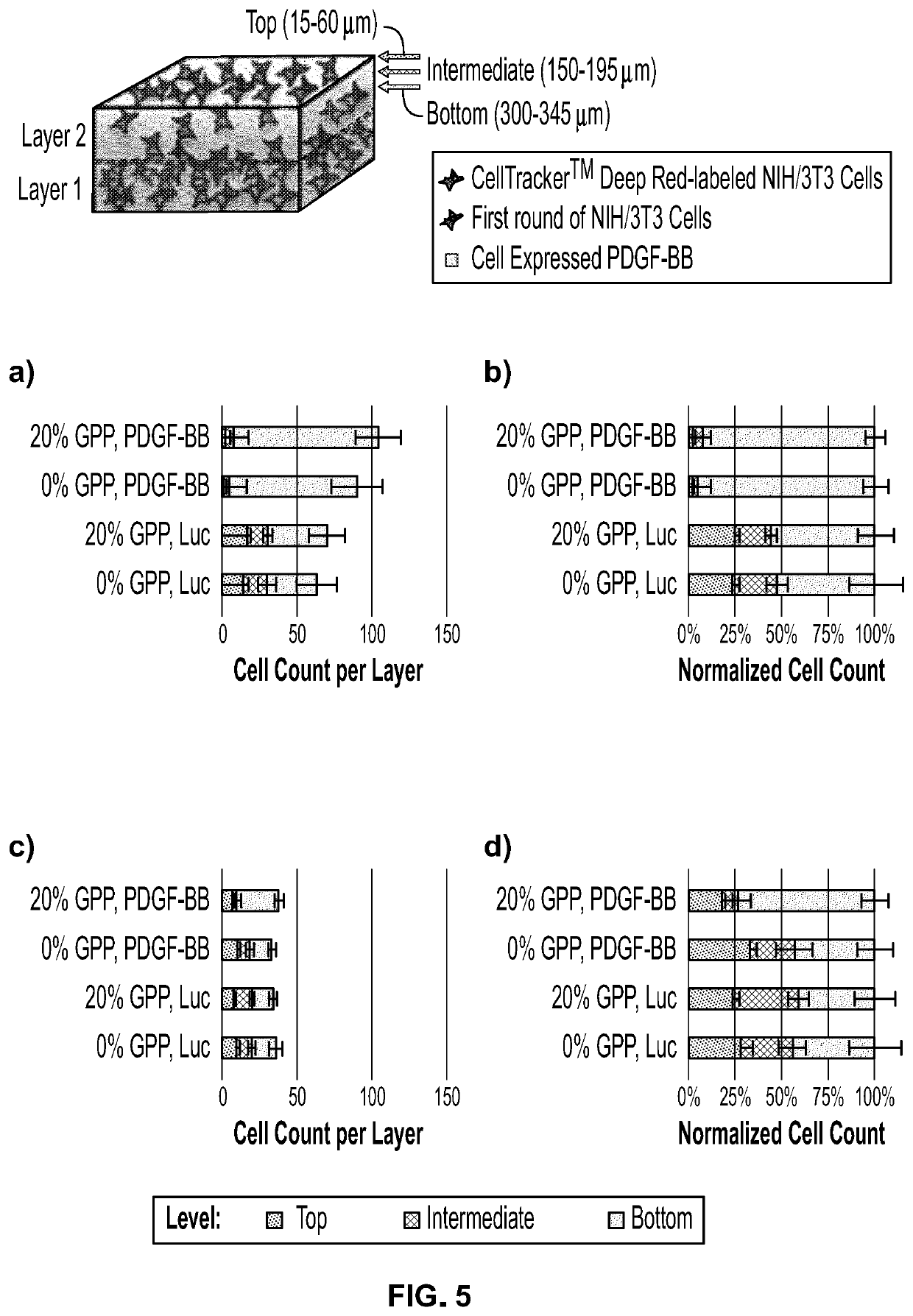Collagen-mimetic peptide mediated delivery of nucleic acid carriers for efficient delivery from collagen
a nucleic acid carrier and collagen technology, applied in the direction of peptide/protein ingredients, active genetic ingredients, genetic material ingredients, etc., can solve the problems of immune response, inability to achieve in vivo gene delivery, so as to improve wound healing in a subject, enhance the production of extracellular matrix, and enhance cell migration
- Summary
- Abstract
- Description
- Claims
- Application Information
AI Technical Summary
Benefits of technology
Problems solved by technology
Method used
Image
Examples
example 1
on of Growth Factor Gene Delivery with Collagen-Triggered Wound Repair Cascades Using Collagen-Mimetic Peptides
[0099]Growth factors (GFs) play vital roles in wound repair. Many GF therapies have reached clinical trials, but success has been hindered by safety concerns and a lack of efficacy. Previously, we presented an approach to produce protein factors in wound beds through localized gene delivery mediated by biomimetic peptides. Modification of polyethylenimine (PEI) DNA polyplexes with collagen-mimetic peptides (CMPs) enabled tailoring of polyplex release / retention and improved gene transfer activity in a cell-responsive manner. In this work, CMP-mediated delivery from collagen was shown to improve expression of platelet-derived growth factor-BB (PDGF-BB) and promote a diverse range of cellular processes associated with wound healing, including proliferation, extracellular matrix production, and chemotaxis. Collagens were pre-exposed to physiologically-simulating conditions (com...
example 2
ver-Stimulated Gene Delivery Through Collagen-Mimetic Peptide-Plasmid Integration in Collagen
[0124]Gene therapies have great potential in regenerative medicine; however, clinical translation has been inhibited by low stability and limited transfection efficiencies. Herein, we incorporate collagen-mimetic peptide (CMP)-linked polyplexes in collagen scaffolds to increase DNA stability by up to 400% and enable tailorable in vivo transgene expression at 100-fold higher levels and 10-fold longer time periods. These improvements were directly linked to a sustained interaction between collagen and polyplexes that persisted during cellular remodeling, polyplex uptake, and intracellular trafficking. Specifically, incorporation of CMPs into polyethylenimine (PEI) polyplexes preserved serum-exposed polyplex-collagen activity over a period of 14 days, with 4 orders-of-magnitude more intact DNA present in CMP-modified polyplex-collagen relative to unmodified polyplex-collagen after a 10 day incu...
example 3
Mimetic Peptides as Tools for Prolonged, Multigene Expression Conducive for GF Delivery in Wounds
[0172]Wound healing is a complex process governed by intricate cellular signaling mediated by numerous components including GFs. To promote healing in nonhealing, chronic wounds, in which healing has become uncoordinated and GF activity is compromised, the topical and sustained delivery of vital GF proteins and GF genes has aided in promoting healing; however, clinical translation has stagnated due to delivery obstacles, validated safety concerns with oncogenic and off-target effects, and an overall lack of efficacy. Recent studies have suggested clinical failure may be due to the focus of most current delivery systems on single GF or dual GF protein / gene delivery without controlled release. A CMP-based strategy for mimicking endogenous healing via controlled delivery of multiple GFs is demonstrated. Specifically, the capacity to tailor the delivery of multiple proteins, including both r...
PUM
| Property | Measurement | Unit |
|---|---|---|
| pH | aaaaa | aaaaa |
| pH | aaaaa | aaaaa |
| surface area | aaaaa | aaaaa |
Abstract
Description
Claims
Application Information
 Login to View More
Login to View More - R&D
- Intellectual Property
- Life Sciences
- Materials
- Tech Scout
- Unparalleled Data Quality
- Higher Quality Content
- 60% Fewer Hallucinations
Browse by: Latest US Patents, China's latest patents, Technical Efficacy Thesaurus, Application Domain, Technology Topic, Popular Technical Reports.
© 2025 PatSnap. All rights reserved.Legal|Privacy policy|Modern Slavery Act Transparency Statement|Sitemap|About US| Contact US: help@patsnap.com



